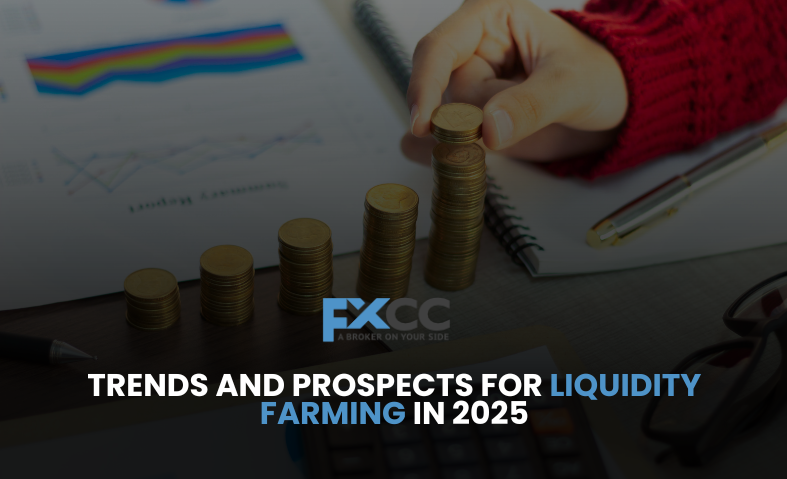A key component of decentralized finance (DeFi) since its inception, liquidity farming, also referred to as yield farming, enables users to generate passive income by contributing capital to decentralized exchanges (DEXs) and other protocols. Liquidity farming is expected to undergo a substantial transformation by 2025 as a result of growing institutional interest, technological breakthroughs, and a developing regulatory framework. The main developments and prospects that will influence liquidity farming in the upcoming year are examined in this article.
Smarter Liquidity: Dynamic and Concentrated Pools
The ongoing trend towards more intelligent liquidity management is one of the most significant developments for 2025. Capital inefficiency results from the frequent uniform distribution of capital across all price ranges in traditional liquidity pools. Nonetheless, Uniswap v3-led innovations like concentrated liquidity pools (CLPs), which have since been expanded upon by other platforms, are starting to become the norm.

Liquidity providers (LPs) can allocate their capital within predetermined price ranges thanks to CLPs. Because their liquidity is concentrated in the areas where the majority of trading activity takes place, LPs can thus earn noticeably higher fees on the capital they have invested. More complex versions of CLPs with dynamic and adaptive features that automatically modify price ranges in response to market conditions should be available by 2025. This will lessen temporary loss and further optimize results. Additionally, protocols will investigate “universal curve” designs, which will enable LPs to implement a range of tactics within the same pool, from broad market exposure to stablecoin-like efficiency.
Extension and Interoperability of Cross-Chain
One blockchain is no longer the exclusive focus of the DeFi ecosystem. A more connected and effective environment is now possible thanks to the growth of Layer-2 solutions and cross-chain bridges. Liquidity farming will adopt a multichain strategy in 2025. In order to access greater yields and diversify their risk, LPs will look for opportunities across multiple blockchains by utilizing bridges.
Cross-chain liquidity pools and farming tactics will grow rapidly as a result of this trend. Protocols with opportunities for aggregated yield and smooth cross-chain operation will become very popular. More market efficiency will result from this interconnection, enabling capital to move more freely to areas where it can produce the greatest amount of value.
Aggregators and Automated Yield Optimization
Many people find it difficult and time-consuming to manage several liquidity positions across various protocols and chains. In 2025, automated yield optimisers and aggregators will continue to be crucial in this respect. Platforms such as Yearn Finance and Beefy Finance manage compounding and gas cost optimization while automating the process of transferring money between protocols to obtain the best yields.
In order to find and seize the most lucrative farming opportunities in real time, these aggregators are getting increasingly complex, integrating cutting-edge algorithms and possibly AI-driven tactics. A greater variety of investors, including those who favor a more hands-off approach, will find liquidity farming more accessible as a result.
Real-World Assets (RWAs) and Stablecoins’ Role
Because they offer a comparatively stable foundation for trading pairs and lending protocols, stablecoins have long been a key component of liquidity farming. Their significance is expected to increase even more by 2025, particularly as regulations become more clear in different jurisdictions. Stablecoins that are fully backed and regulated will probably receive more attention as institutional players look for legal alternatives for their DeFi operations.
Beyond stablecoins, a new trend that will open up new opportunities for liquidity farming is the tokenization of real-world assets (RWAs). Consider lending money to pools that are secured by commodities, government bonds, or tokenized real estate. By bridging the gap between DeFi and traditional finance, this could open up enormous amounts of capital and introduce new asset classes to the liquidity farming ecosystem.
Risk Management: Transient Loss and Smart Contract Security
Although there are a lot of opportunities in liquidity farming, it’s important to recognize and reduce the risks involved. One of LPs’ main concerns is impermanent loss, which happens when the value of deposited assets fluctuates in relation to one another. We can anticipate more advancements in tools and tactics to reduce impermanent loss in 2025, including customized pool designs, dynamic fee structures, and enhanced analytics to help LPs better understand their exposure.
Additionally, smart contract security is still crucial. Malicious actors find DeFi protocols increasingly appealing as the value they contain increases. Platforms with a solid history of security audits, bug bounty programs, and strong risk management frameworks will be given preference by investors. In order for LPs to recognize and steer clear of potentially vulnerable protocols, education and due diligence will be essential.
The Development of Regulation and Institutional Involvement
The regulatory environment surrounding DeFi and cryptocurrency is changing quickly. We expect additional clarification and possibly new rules affecting liquidity farming, especially in large financial hubs, in 2025. Regulations may create uncertainty at first, but they may also open the door for increased institutional involvement.
More established financial institutions may be drawn to the DeFi space by clearer regulations, contributing significant resources and experience. The creation of more specialized liquidity farming goods and services that are suited to their unique risk and compliance needs may result from this institutional interest. Regulators will face the difficult task of protecting investors while promoting innovation.

The Bottom Line
In 2025, liquidity farming has a promising future thanks to its growing sophistication, accessibility, and convergence with traditional finance. Although there are still risks, those who are willing to work in this fast-paced industry will find that there are a lot of opportunities due to the continuous innovation in concentrated liquidity, cross-chain solutions, automated optimization, and the integration of real-world assets. Being informed, comprehending the underlying mechanisms, and implementing astute risk management techniques will be essential for success in this changing environment.


